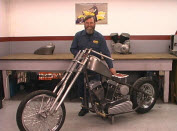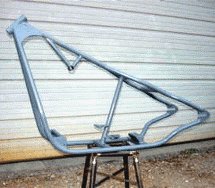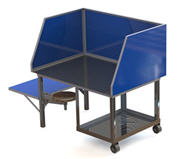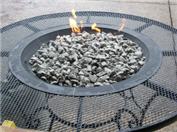Common MIG Welding Defects, Their Causes and Solutions!

In this short article we will discuss some MIG welding defects that occur frequently and also how to avoid or fix these problems.
But first, I hope by now you have enough MIG welding tips to get started welding properly. And if you have done any welding you know that it's fairly easy to get good at. But there are some problems that come with an easy process.
The main area you should understand is what a weld defect is and how to fix the problem. So lets cover the defects that happen the most in MIG welding.
6 MIG Welding Defects And How To Overcome Them!
Porosity: There are two types of porosity in welding. Surface and Crater porosity (otherwise known as 'cratering').
Surface porosity happens when you have contamination of the weld resulting from oxygen or other atmospheric contaminants entering the weld.
The reason this happens is usually because your shielding gas is not high enough, or even too high. Or, maybe you decided to MIG weld when it's windy, which is a really bad idea.
Another problem could be that your nozzle is clogged.
The
solutions to surface porosity is to clean your nozzle, and make sure
you have the right shelding gas settings. And if you decide to work in
the wind then get some sort of wind protection.
Cratering: Cratering is a frustrating problem. It happens when you pull from the weld prior to the weld crater becoming solid.
The solution to this mig welding defect is to slow down your rate of travel as when get to the end of your joint.
Another potential solution is to reduce the arc gap.
Cold Lap: A cold lap occurs when when the base metal is not melted well enough. What happens is the weld puddle goes into the base metal that has not been welded yet. Usually this problems occurs when your weld puddle is too big.
A remedy to the cold lap problem is to maintain the arc at the weld puddles leading edge.
You can also make the puddle smaller simply by speeding up your welding travel speed.
Tow other options are to slow the wire feed down a bit, and using a mild whipping technique.
Poor Penetration: Poor penetration is very common in welding. This occurs when you don't have enough heat as you weld. When you don't have enough heat input in the welding zone you can try either a shorter wire stick out, or speed up the wire feed and therefore increase the amperage settings on your MIG welder.
Burnthrough: This is another very frustrating mig welding defect or problem. It's the opposite of poor penetration. It's when you have too much penetration, or technically it's when you have excessive heat input at the welding zone.
The remedy to this mig welding problem is to slow down the wire feed and therefore reduce your amperage.
Another remedy is to increase your welding travel speed.
Something
that some welders do not know is that you can get burn-through when the
welds root opening is too large. And the way you fix that is you can
lengthen your wire stick out and go back and forth with the torch just a
tad.
Weld Whiskers: A whisker is a small bit of electrode that ends up sticking through the weld joint on the root side of it.
This occurs when you get your electrode ahead of the weld puddles leading edge.
You can avoid this issue by snipping off the little nodule or blob on the end of your wire prior to welding. And you can also slow down the travel speed as well use that slight whipping technique we discussed briefly above.
These MIG welding defects are not just associated with MIG welding, they are also common welding problems in most other forms of welding with a few exceptions like whiskers because not all welding is done with an electrode.
If you found this helpful or you want more welding tips and tricks please subscribe to our newsletter because there's a whole lot more we want to share including plans, projects, and resources you don't want to miss.
Copyright WcWelding.com All Rights Reserved.
Welding Plans:
New! Welding Table
New! Log Splitter
Top Projects:






